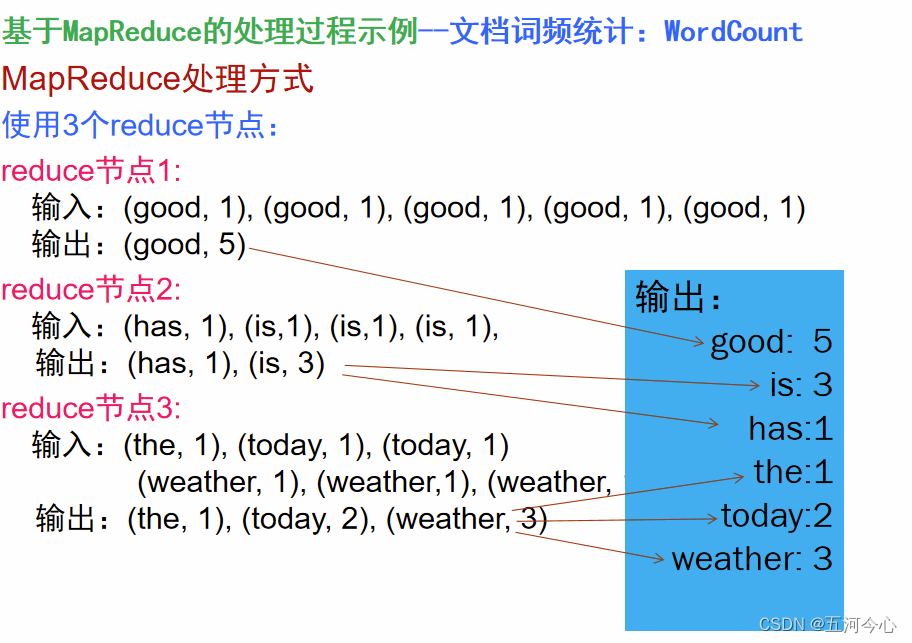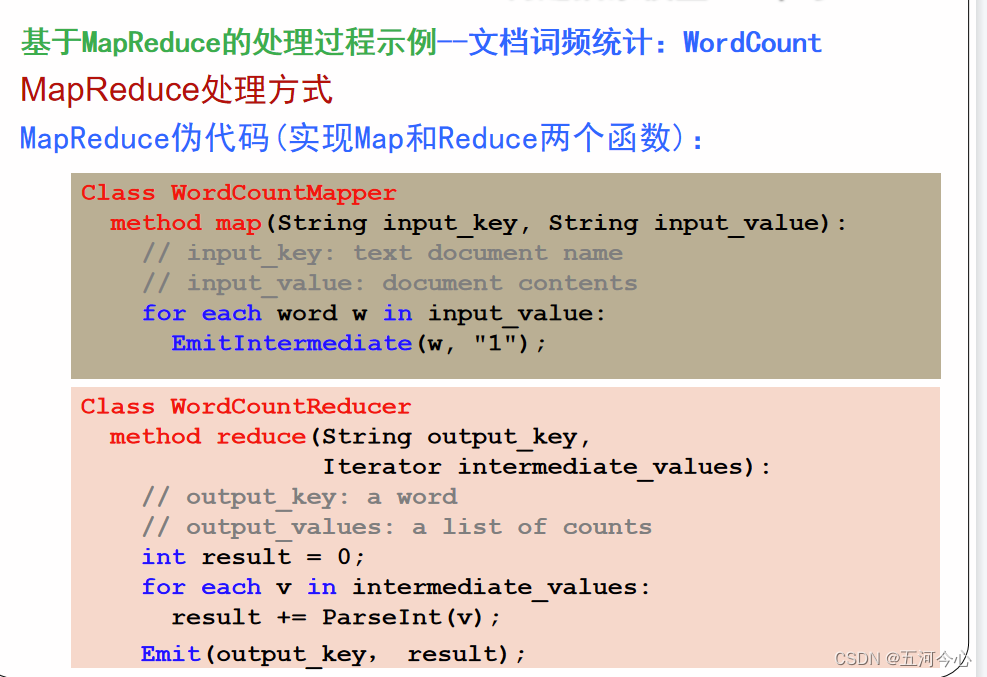提示:文章写完后,目录可以自动生成,如何生成可参考右边的帮助文档

文章目录
前言
提示:这里可以添加本文要记录的大概内容:
未来的我,这里知识浅薄理解,仅作参考之用
提示:以下是本篇文章正文内容,下面案例可供参考
一、WordCount是啥
是一种计数代码
传统代码
传统的串行处理方式(Java):
设有4组原始文本数据:
Text 1: the weather is good Text 2: today is good
Text 3: good weather is good Text 4: today has good weather
String[] text = new String[]
{ “the weather is good”,“today is good ”,“good weather is good ”,” today has good weather” };
HashTable ht = new HashTable();
for(i=0; i<3; ++i)
{ StringTokenizer st = new StringTokenizer(text[i]);
while (st.hasMoreTokens())
{ String word = st.nextToken();
if(!ht.containsKey(word)) //没有这个单词就传入哈希表中
{ ht.put(word, new Integer(1)); }
else { int wc = ((Integer)ht.get(word)).intValue() +1;// 有就计数加1
ht.put(word, new Integer(wc));//更新次数
}
}
}
for (Iterator itr=ht.KeySet().iterator(); itr.hasNext(); )
{ String word = (String)itr.next();
System.out.print(word+ “: ”+ (Integer)ht.get(word)+“; ”);
}
其中StringTokenizer是Java中的一种用来分隔字符(去除分隔符)的类,其hasMoreTokens是用来判断传入字符串中是否还有单词的方法;nextToken()是获取下一个单词
MapReduce方式
设有4组原始文本数据:
Text 1: the weather is good Text 2: today is good
Text 3: good weather is good Text 4: today has good weather
MapReduce处理方式
使用4个map节点:
map节点1:
输入:(text1, “the weather is good”)
输出:(the, 1), (weather, 1), (is, 1), (good, 1)
map节点2:
输入:(text2, “today is good”)
输出:(today, 1), (is, 1), (good, 1)
map节点3:
输入:(text3, “good weather is good”)
输出:(good, 1), (weather, 1), (is, 1), (good, 1)
map节点4:
输入:(text3, “today has good weather”)
输出:(today, 1), (has, 1), (good, 1), (weather, 1)


总结
2022.9.14 11:21
本文含有隐藏内容,请 开通VIP 后查看